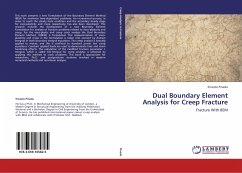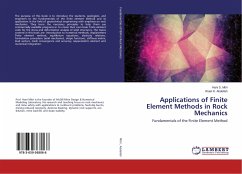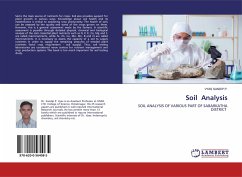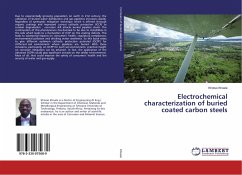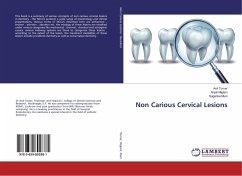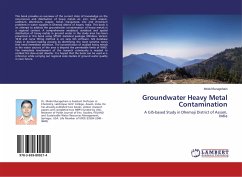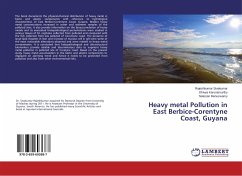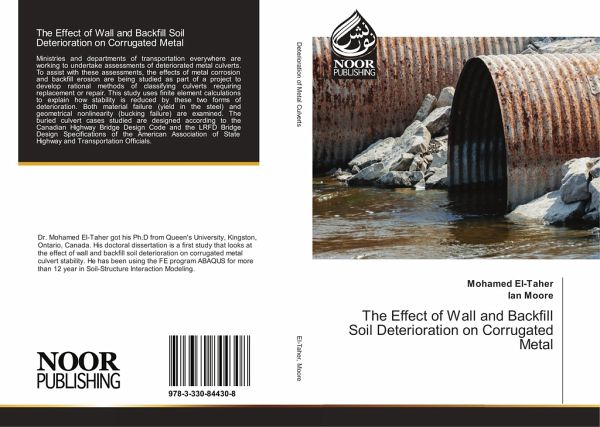
The Effect of Wall and Backfill Soil Deterioration on Corrugated Metal
Versandkostenfrei!
Versandfertig in 6-10 Tagen
46,99 €
inkl. MwSt.

PAYBACK Punkte
23 °P sammeln!
Ministries and departments of transportation everywhere are working to undertake assessments of deteriorated metal culverts. To assist with these assessments, the effects of metal corrosion and backfill erosion are being studied as part of a project to develop rational methods of classifying culverts requiring replacement or repair. This study uses finite element calculations to explain how stability is reduced by these two forms of deterioration. Both material failure (yield in the steel) and geometrical nonlinearity (bucking failure) are examined. The buried culvert cases studied are designe...
Ministries and departments of transportation everywhere are working to undertake assessments of deteriorated metal culverts. To assist with these assessments, the effects of metal corrosion and backfill erosion are being studied as part of a project to develop rational methods of classifying culverts requiring replacement or repair. This study uses finite element calculations to explain how stability is reduced by these two forms of deterioration. Both material failure (yield in the steel) and geometrical nonlinearity (bucking failure) are examined. The buried culvert cases studied are designed according to the Canadian Highway Bridge Design Code and the LRFD Bridge Design Specifications of the American Association of State Highway and Transportation Officials.




